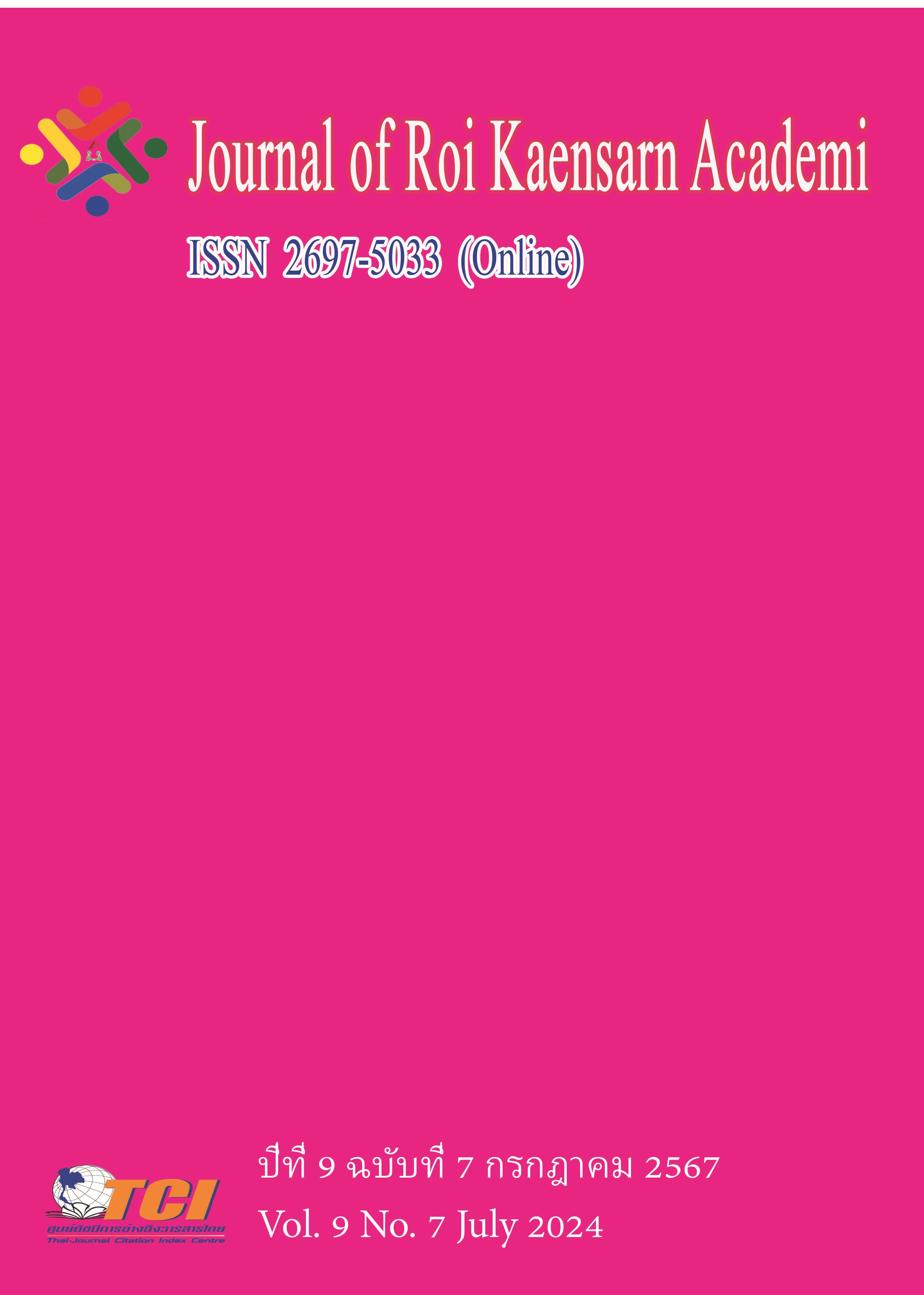The Development of University Administrators Leadership Model in Guangxi Province, People's Republic of China
Main Article Content
บทคัดย่อ
In the crucial period of current higher education reform in China, enhancing the leadership of university administrators was essential for promoting education quality and management efficiency. Universities in Guangxi Province faced challenges such as limited resources and uneven education quality during their development, urgently needing effective leadership models to guide and improve management levels
The purpose of this research was to: 1) Investigate the components of leadership among university administrators in Guangxi Province, People's Republic of China. 2) Develop a leadership model for university administrators in Guangxi Province, People's Republic of China. And 3) Evaluate the leadership model for university administrators in Guangxi Province, People's Republic of China. The study was conducted in three phases: In the first phase, the composition of leadership among university administrators in Guangxi Province, People's Republic of China, was researched. The sample for this phase included 370 university administrators and faculty members from nine universities in Guangxi Province. The research instrument was a Likert five-point scale questionnaire created by the researchers, with a reliability score of 0.964. The statistical methods used for data analysis included frequency, percentage, mean, and standard deviation. In the second phase, a leadership model was developed for university administrators in Guangxi Province, People's Republic of China. This phase was carried out in two steps: Step 1 involved three administrators from exemplary universities in Guangxi Province, obtained through purposive sampling, with semi-structured interviews as the research tool. Step 2 involved seven experts, also obtained through purposive sampling, with focus group discussions used to finalize the model draft and manual. The third phase evaluated the leadership model for university administrators in Guangxi Province, People's Republic of China. Evaluators were obtained through purposive, sampling and divided into two groups: one group of five experts evaluated the accuracy and appropriateness of the model and its user manual, while another group of 30 individuals involved in university administration assessed the feasibility and usefulness of the model and its user manual, using a five-level scale evaluation questionnaire. The statistical methods used for data analysis were mean and standard deviation. Research has found that:
1.The various components of leadership development among university administrators in Guangxi Province, People's Republic of China, were at a high level overall and in various aspects
2. The enhancement of leadership capabilities among university administrators in Guangxi Province, People's Republic of China, required strengthening in four areas: 1) Influence, 2) Execution ability, 3) Foresight 4) Decision-making ability.
3. The evaluation results of the leadership model and user manual for university administrators in Guangxi Province, People's Republic of China, showed that expert reviewers rated its accuracy and applicability highly. For university administrators, the assessments of usefulness and feasibility were also at a high level.
The leadership model developed in this study effectively enhanced the influence, execution ability, foresight, and decision-making capabilities of university administrators in Guangxi Province. Both expert reviewers and university administrators highly rated the model's accuracy, applicability, practicality, and feasibility, providing a solid theoretical and practical foundation for future leadership development among university administrators.
Article Details
เอกสารอ้างอิง
Central People's Government of the People's Republic of China. (2023, September 15). Xi Jinping: Steadily Advancing the Construction of an Education Power, https://www.gov. cn/yaowen/liebiao/202309/content_6904156.html
Dong, T. (2020). Research on the Informatization Leadership Model of Vocational College Presidents. Modern Educational Technology. 22 (11), 77-83.
Fan, S, Yu, Z, & Qiu, D. (2022). Construction and Validation of a Digital Leadership Model for University Faculty. Heilongjiang Researches on Higher Education. 12 (06), 91-100.
Fiedler, F. E., & Chemers, M. M. (1984). Improving Leadership Effectiveness: The Leader Match Concept. New York, John Wiley and Sons.
Gronn, P. (2000). Distributed properties: A new architecture for leadership. Educational management & administration. 28 (3), 317-338.
Greenleaf, R. K. (1998). The power of servant-leadership. Berrett-Koehler Publishers.
Li, Y. (2015). Leadership construction in universities: Management case of secondary college deans. Beijing Institute of Technology Press.
Ling, B. (2023). Research on principal leadership improvement strategies. Asia Pacific Education. 15 (02), 38-40.
Liu, H. (2005). PDCA cycle promotes continuous quality improvement. Electronic Quality. 14 (7), 3.
Liu, L. (2023). Master's degree in technical school principal leadership case study (Master's dissertation, Hubei Normal University). Online. Retrieved from https://link.cnki.net/ doi/10.27796/d.cnki.ghbsf.2023.000002doi:10.27796/d.cnki.ghbsf.2023.000002
Miao, J., & Huo, G. (2006). Research on the Five Forces Model of Leadership. Leadership Science. 23 (09), 20-23.
Maxwell, J. C. . (2004). The 21 irrefutable laws of leadership. Irrefutable Laws of Leadership Business Book Summaries.
Ministry of Education of the People's Republic of China. (2022, November 2nd). Implementing the Strategy of Rejuvenating the Country through Science and Education to Strengthen Talent Support—On Studying and Implementing the Spirit of the 20th National Congress of the Communist Party of China, http://www.moe.gov.cn/jyb_xwfb/s 5148/202211/t20221102_697098.html
Ma, X. (2018). Reflections and Explorations on the De-administration of Universities under the "Double First-Class" Strategy. China and Foreign Entrepreneurs. 23 (18), 217-218
Schein, E. , & Francisco, C. . (1992). Organizational culture and leadership. Jossey-Bass Publishers.
Wang, L. (2015). The current situation of academic leadership in foreign universities and its enlightenment. Education Review. 13 (10), 4.
Yang, S. (2008). Six dimensions of leadership. Peking University Press.
Zhao, G. (2009). On the foresight of leaders. Journal of Petrochemical Management Cadre College. 11 (1), 3.
Zheng, K. (2021). Practice and thinking on improving principles. Land Bridge Vision. 12 (11), 100-101.
Zhou, L. (2012). A review of research on the leadership of university presidents in China. China Electric Power Education: Part 1, 13 (16), 5-7.
Zhong, B. (2017). First-class Undergraduate Education as the Core Task and Important Foundation for the Construction of "Double First-Class". China Higher Education. 23 (19), 16-17.
Zhao, Q, & Liu, J. (2010). Research on the Teaching Leadership Model of School Principals in China. Primary and Secondary School Management. 12 (03), 10-13.

